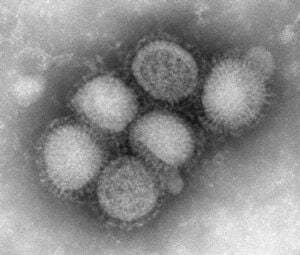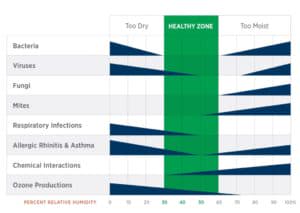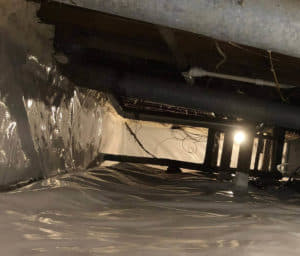
Originally posted 3/19/20. Updated 8/6/21
Increasingly, people are concerned about the indoor air quality of their homes. This is not a surprising development. Our society in general has been becoming more aware of (and worried about) our air quality. Much of this interest began when so many of us began working from home, or were required to stay home during the COVID-19 lockdowns.
But some of it also stems from our awareness of the growing number of pollutants in our environment. Many countries are taking steps to limit greenhouse gas emissions, and companies are working to adopt more “green” practices- but this is a bit like closing the barn door after the horse escapes.
Acculevel has been waterproofing and encapsulating crawl spaces since our start in 1996. We have recently seen an increase in customers’ concerns about the air quality in their homes. After reviewing the most commonly asked questions, we’ve decided to address them in this article to improve everyone’s understanding.
Much of the recent interest in air quality can be traced back to the development of new virus strains, and our desire to avoid contracting them. In the last ten years or so, we’ve had a number of major global outbreaks: Swine Flu (H1N1), (Avian) Influenza, Middle East respiratory syndrome coronavirus (MERS-CoV), Zika, and COVID-19.
We need to defend ourselves from more than just epidemics and pandemics. The last regular flu season in Winter 2018-2019 infected over 35 million Americans, and caused 490,600 hospitalizations and 34,200 deaths. Children and the elderly are the most vulnerable, as is anyone with a compromised immune system.
Air quality is obviously important to everyone (we all need oxygen!), but as individuals we have little control over the contents of our atmosphere. However, your home’s environment is something you can improve. Beyond that, it’s essential to focus on indoor air quality for anyone who has allergies, asthma, a compromised immune system, respiratory issues, or may become home-bound.
 This image of the identified H1N1 influenza virus was taken in the CDC Influenza Laboratory.
This image of the identified H1N1 influenza virus was taken in the CDC Influenza Laboratory.
The most common issue is that the air in your crawl space is full of unseen pollutants, and those pollutants don’t stay in the crawl space. Let’s break down the primary issues:
 This photo was taken by an Acculevel project advisor during a routine free estimate. This is a crawl space needing repair- old insulation is saturated and falling, the vapor barrier is insufficient, and standing water is visible around the edges.
This photo was taken by an Acculevel project advisor during a routine free estimate. This is a crawl space needing repair- old insulation is saturated and falling, the vapor barrier is insufficient, and standing water is visible around the edges.
We recommend that you encapsulate your crawl space, because this will give you the most relief from pollutants, significantly improve air quality, and decontaminate your environment. Encapsulation will address all of the issues we’ve discussed, and provide you with a clean, nearly-sterile environment under your home. Many customers use their now-encapsulated crawl spaces as storage for holiday decorations, out-of-season clothing, and the like.
 There is a decisive point at the 50% humidity level. This is the ideal humidity level to reduce or eliminate bacteria, viruses, fungi, mites, and allergens- reducing your chances of a respiratory infection.
There is a decisive point at the 50% humidity level. This is the ideal humidity level to reduce or eliminate bacteria, viruses, fungi, mites, and allergens- reducing your chances of a respiratory infection. This photo was taken by an Acculevel crew member, after completing encapsulation.
This photo was taken by an Acculevel crew member, after completing encapsulation.
If you need more information about crawl space repairs and costs, we have more to share! You can read our other blogs on this topic, which investigate the risks of mold, the costs to repair water damage to foundations, or the costs associated with encapsulation.
If your answer is yes, find an experienced company, and make an appointment. Before you sign a contract for any service, always verify the company is reputable, insured, and accredited by the Better Business Bureau.
If you live in Indiana or the surrounding states, contact Acculevel. If you have noticed any problems and would like an evaluation, you can request a free estimate. An experienced project advisor will examine the areas of concern and recommend the best course of action for you, to keep you AND your home strong and healthy for years to come.
[DISPLAY_ULTIMATE_SOCIAL_ICONS]